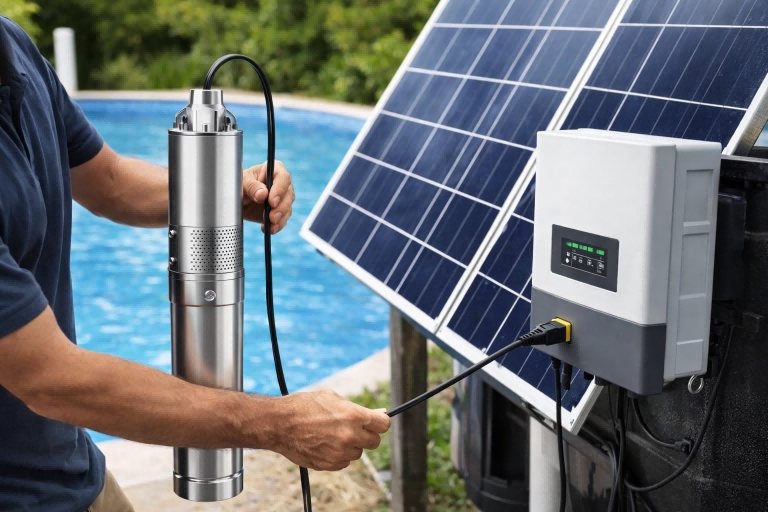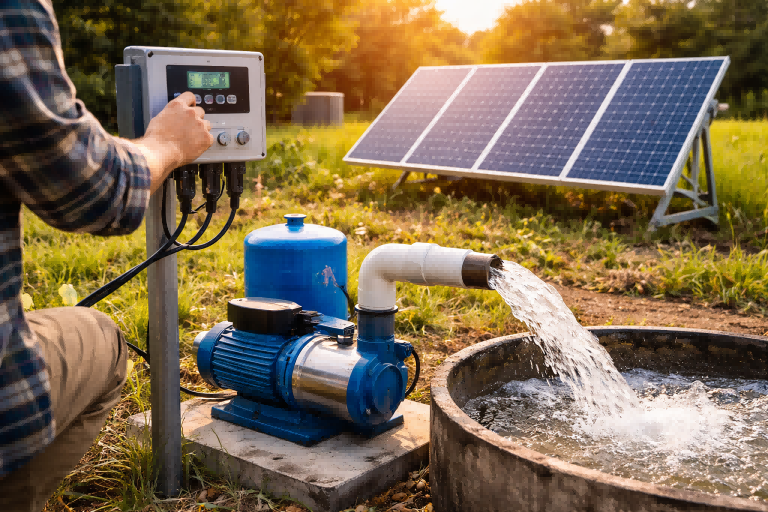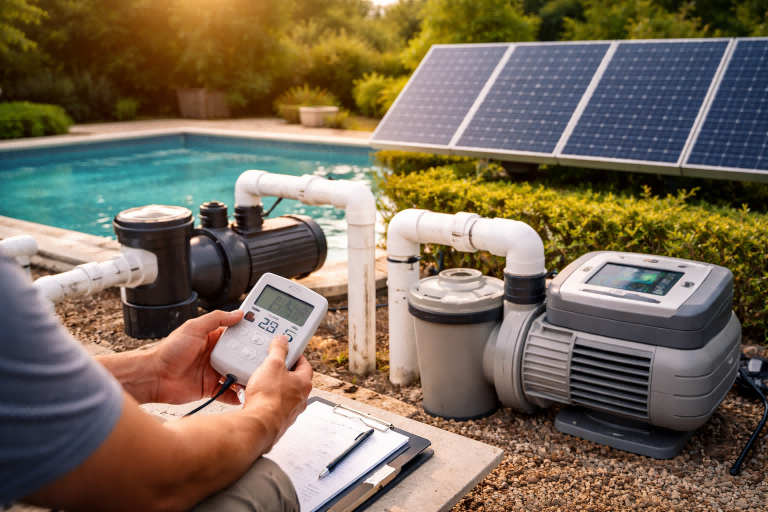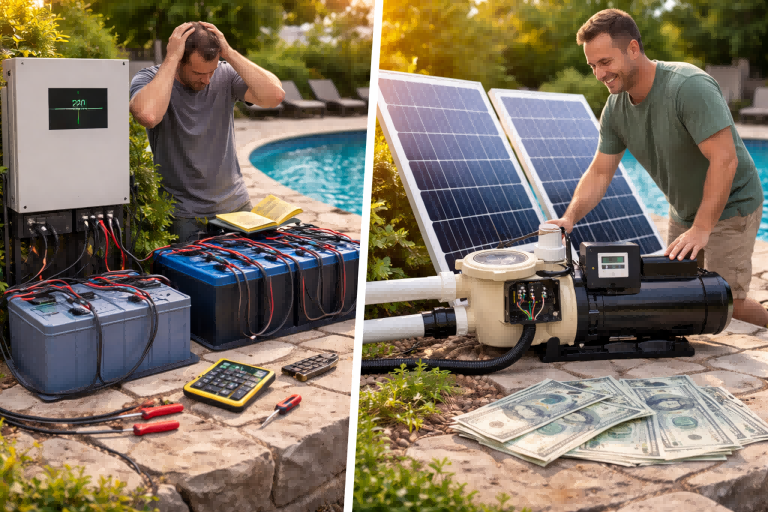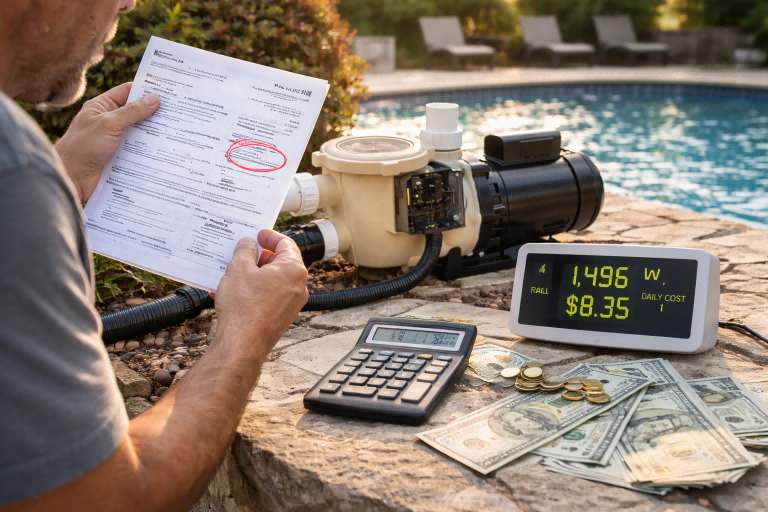Struggling with the constant hassle of getting your pump started?
The manual priming process is tedious and wastes valuable time.
A self-priming pump automates this task, offering a seamless and efficient solution from the start.
A self-priming pump is often a better choice because it automatically removes air from the suction line, eliminating the need for manual intervention[^1]. This feature saves significant time and labor, making it ideal for applications where the pump is above the liquid source or where intermittent operation is common.
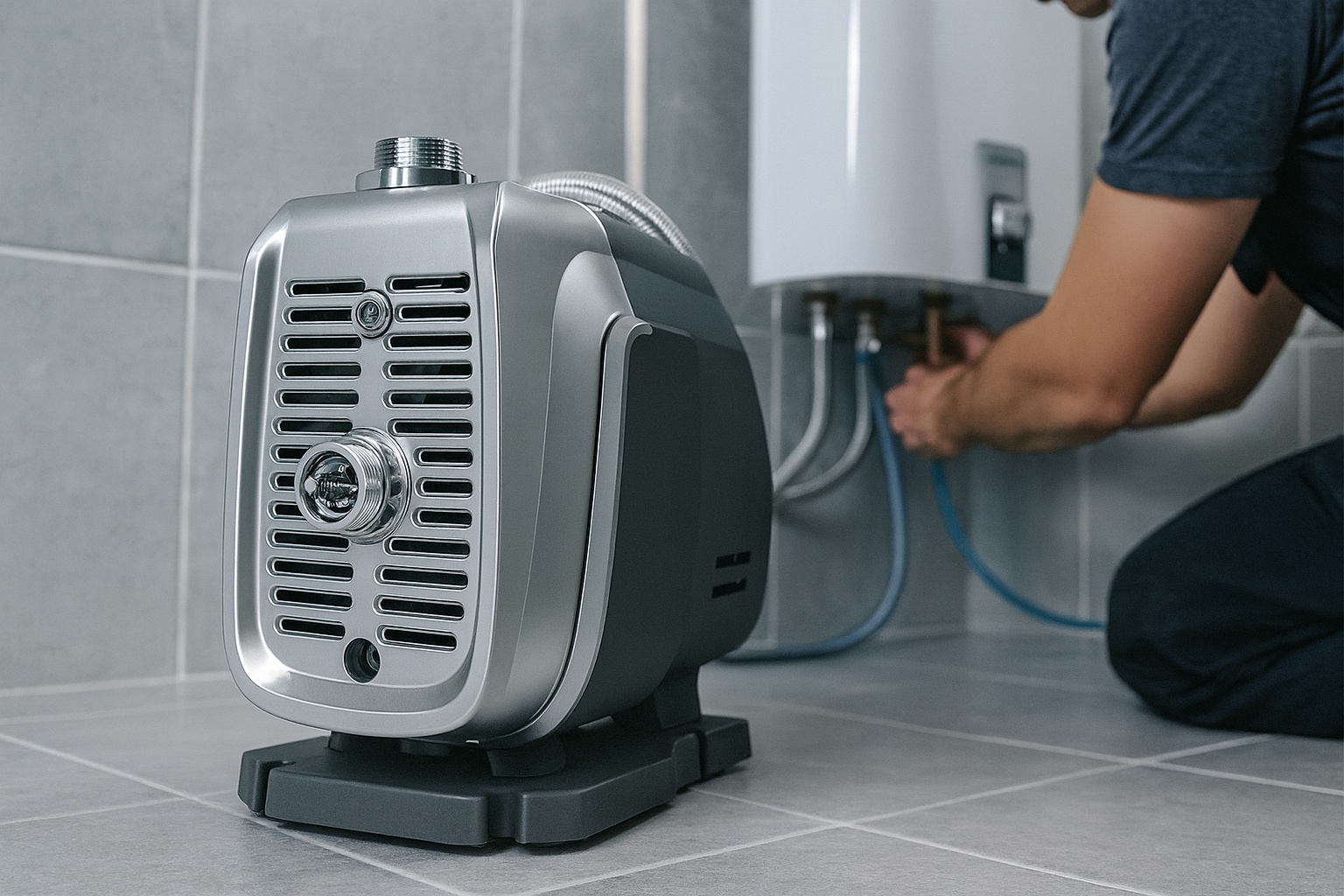
While the convenience of automatic priming is a major advantage, it's important to recognize that no single pump is perfect for every situation.
These pumps have specific design features that make them excel in certain conditions but also introduce limitations in others.
To determine if a self-priming pump is truly the better option for you, a closer look at its advantages, disadvantages, and ideal applications is essential.
This detailed exploration will provide the clarity needed to make the right choice for your fluid transport needs.
What Are the Key Advantages of Self-Priming Pumps?
Are you tired of pump failures caused by unpredictable air pockets in your system?
Air can halt operations and even damage conventional pump components.
Self-priming pumps are expertly designed to manage air, ensuring smooth and uninterrupted fluid flow when you need it most.
The primary advantages are the complete elimination of manual priming, the ability to handle air-gas mixtures without failing, and significant time and labor savings[^1]. Their versatility allows them to work with various fluids and simplifies the installation process, boosting operational efficiency across the board.
The benefits of self-priming technology extend far beyond simple convenience.
They represent a fundamental shift in how we approach fluid management, particularly in challenging environments.
By automating a critical and often problematic step, these pumps introduce a level of reliability that can transform operations in various sectors.
Let's break down the specific features that make these pumps such a powerful and popular choice.
Elimination of Manual Priming
With a conventional pump, the startup process is often a chore.
You must manually pour liquid into the pump casing and suction line to create the necessary conditions for pumping.
This process is not only time-consuming but also labor-intensive, requiring direct personnel intervention every time the pump needs to start after losing its prime[^1].
Self-priming pumps, in contrast, are engineered for autonomy.
Their design cleverly incorporates an internal reservoir or an enlarged volute casing that retains liquid.
When the pump starts, the impeller mixes this retained liquid with the air in the suction line[^2].
This creates a fluid-air mixture that the pump can then move.
The design of the casing allows the lighter air to separate and be expelled through the discharge port, while the heavier liquid falls back down.
This cycle repeats rapidly, progressively evacuating all the air from the suction line.
Once the air is gone, the pump creates a vacuum that draws liquid up from the source, and normal pumping begins automatically.
This entire process happens in moments, without any need for manual effort.
Handling of Air and Gases
One of the biggest weaknesses of a standard centrifugal pump is its inability to handle air.
If air enters the suction line, it can form an air lock that prevents the pump from moving liquid.
This can also lead to a dangerous condition known as cavitation, where air bubbles rapidly collapse near the impeller, creating shockwaves that can cause significant damage to the pump's internal components over time[^1].
Self-priming pumps are specifically built to overcome this challenge.
Their unique air evacuation mechanism is designed to handle air-water mixtures effectively.
They don't just pump liquid; they actively separate and purge air from the system.
This capability is crucial in applications where air entrapment is common, such as when pumping from a source with a fluctuating water level or when the end of a suction hose might be temporarily exposed.
This ensures a consistent and smooth flow, free from the disruptions and potential damage caused by air in the system.
Time and Labor Savings
The time spent on manual priming can add up significantly, especially in operations that require frequent starts and stops.
A standard pump might sit idle while personnel find the necessary tools and liquids to prime it.
Self-priming pumps are practically instantaneous.
They begin their automatic priming cycle the moment they are switched on, drastically reducing downtime and improving overall productivity[^1].
This automation also liberates your workforce.
Instead of dedicating personnel to monitor and prime pumps, employees can focus on more critical and value-added tasks.
In industries with lean staffing or remote pumping stations, this advantage is monumental.
It reduces the need for constant on-site supervision and minimizes the operational burden on your team.
| Feature Comparison | Non-Self-Priming Pump | Self-Priming Pump |
|---|---|---|
| Priming Process | Manual, requires filling the pump | Automatic, evacuates air itself[^2] |
| Startup Time | Slow, dependent on manual priming | Fast, immediate start-up |
| Labor Requirement | Requires personnel intervention | Minimal to no intervention[^1] |
| Reliability | Prone to air lock and cavitation | Reliably handles air-gas mixtures[^1] |
Versatility and Ease of Installation
Self-priming pumps are remarkably adaptable.
They are capable of handling a wide spectrum of fluids, from clean water to liquids containing suspended solids, slurries, or corrosive substances[^3].
This makes them a go-to solution for diverse industries, where a single pump model might be needed for multiple different tasks.
Their design also simplifies the setup process.
Because they don't require external priming mechanisms, foot valves, or complex flooded suction arrangements, the overall infrastructure needs are reduced.
Installation is faster, less complex, and more cost-effective.
This is particularly beneficial for temporary installations, such as at construction sites, or in systems where a simple, robust solution is preferred.
What Are the Potential Downsides of Self-Priming Pumps?
Are you concerned that the advanced features of a self-priming pump might come with a hefty price tag?
The initial investment for specialized equipment can indeed be a major consideration.
However, it is vital to look beyond the upfront cost and evaluate the long-term value and operational savings.
The main disadvantages include a higher initial purchase price and a more complex design that may require specialized maintenance[^1]. They can also exhibit lower efficiency at high suction lifts and may be sensitive to fluids with large particles or very high viscosity, limiting their suitability for some applications[^3].
No technology is without its trade-offs, and self-priming pumps are no exception.
Their specialized design, while providing significant advantages, also introduces a unique set of challenges.
Understanding these limitations is just as important as appreciating their benefits.
A clear-eyed view of their potential drawbacks will ensure you select a pump that not only solves your immediate problem but also proves to be a practical and sustainable investment over its entire operational life.
Higher Initial Cost
Innovation and advanced engineering typically come at a premium.
Self-priming pumps are more complex than their standard centrifugal counterparts, incorporating additional components and more intricate casing designs to achieve their automatic priming capability.
This complexity in manufacturing translates to a higher upfront purchase price[^1].
For budget-conscious projects, this initial cost can be a significant hurdle.
However, a true cost analysis should extend over the pump's entire lifespan.
While the initial investment is higher, the savings in labor, reduced downtime, and the elimination of external priming equipment can often result in a lower total cost of ownership.
It becomes an evaluation of capital expenditure versus long-term operational expenditure.
Complex Design and Maintenance
The very mechanism that makes a self-priming pump so effective also contributes to its complexity.
The internal chambers, passages, and clearances required for air separation are more intricate than those in a standard pump.
While this sophisticated design is the key to their performance, it can pose challenges when it comes to maintenance and repairs[^1].
Troubleshooting issues may require a deeper understanding of the pump's unique operating principles.
Regular maintenance is crucial to keep these intricate mechanisms functioning correctly.
Ensuring that internal clearances are within specification and that the reservoir system is intact is vital for performance.
This often necessitates the use of skilled technicians who are familiar with the specific design, which can add to the long-term maintenance costs.
Limited Performance at High Suction Lifts
Suction lift refers to the vertical distance from the surface of the liquid source to the centerline of the pump.
All pumps have a limit to how high they can lift a fluid, as it is ultimately atmospheric pressure that pushes the liquid into the suction line.
While self-priming pumps are excellent at lifting fluid from below, their efficiency can start to decrease at higher suction lifts[^1].
Part of the pump's energy is consumed in the process of circulating fluid internally to evacuate air.
As the suction lift increases, more energy is required simply to lift the water, leaving less energy available for efficient pumping.
In scenarios with very high suction lifts, a different type of pump, such as a submersible or a standard centrifugal pump with a foot valve and flooded suction, might provide a more energy-efficient solution.
Sensitivity to Fluid Properties
The performance of a self-priming pump can be influenced by the characteristics of the fluid being pumped.
In applications involving fluids with large, abrasive solids or substantial particulate matter, the intricate internal passages of a self-priming pump can be susceptible to clogging or accelerated wear[^1].
This can hinder the priming process and reduce overall efficiency.
Similarly, high viscosity presents a challenge.
Viscosity is a fluid's resistance to flow.
Highly viscous liquids are thick and flow slowly, which can make it difficult for the pump to create the internal circulation needed to separate air effectively.
While some self-priming designs are better suited for this, there are limits.
Overcoming these issues often requires specific design modifications or selecting a different pump technology, such as a positive displacement pump, that is inherently better at handling viscous fluids.
Where Are Self-Priming Pumps Most Commonly Used?
Are you facing fluid transfer challenges in an environment where reliability is non-negotiable?
From keeping construction sites dry to ensuring crops get the water they need, consistent pump performance is critical.
Self-priming pumps deliver the dependable, automated operation required for these demanding, real-world tasks.
They are frequently used for construction site dewatering, agricultural irrigation, marine bilge pumping, and in municipal wastewater treatment[^1]. They are also invaluable for domestic well water systems, where their ability to manage air ensures a steady and reliable water supply for households.
The versatility and robustness of self-priming pumps have made them indispensable across a wide range of industries.
Their unique ability to handle air and operate without manual priming makes them the perfect tool for any job where the fluid source isn't perfectly stable or easily accessible.
Let’s explore some of the key sectors where these pumps have become the standard solution for tough fluid management problems.
Construction and Dewatering
Construction sites are often plagued by the accumulation of rainwater, groundwater, or runoff.
This excess water can cause project delays, create safety hazards, and compromise the structural integrity of foundations.
Self-priming pumps are the workhorses of dewatering operations.
They can be quickly set up to pump out water from excavations, trenches, and other low-lying areas.
Because the water levels can fluctuate wildly, a pump's ability to re-prime itself automatically after running dry is a massive advantage.
It can be left to operate unattended, reliably removing water as it accumulates.
Agriculture and Irrigation
Efficient water management is the lifeblood of modern agriculture.
Farms often rely on water from sources like rivers, ponds, or canals, where the water level can vary.
Self-priming pumps are ideal for drawing water from these sources to supply irrigation systems.
Their ability to be placed on a riverbank or next to a pond, well above the water level, simplifies installation and maintenance.
They can handle the small amounts of debris and air that are common in such applications, ensuring a consistent water supply for crop cultivation and livestock.
Marine Industry
On boats and ships, managing unwanted water is a matter of safety and stability.
Self-priming pumps are essential components of bilge systems, designed to remove any water that collects in the lowest part of the vessel's hull.
The constant motion of a ship means that the pump will inevitably draw in a mixture of air and water.
A self-priming pump handles this effortlessly, ensuring the bilge remains dry and the vessel stays buoyant and safe.
Their reliability and automatic operation are critical in the unforgiving marine environment.
Municipal and Industrial Wastewater
Wastewater treatment plants and municipal pumping stations must handle fluids that are often mixed with solids and entrained gases.
Conventional pumps can struggle in these conditions, frequently losing prime or becoming damaged by air locks.
Self-priming pumps, particularly those designed for solids handling, have become a cornerstone of wastewater management.
They are installed at lift stations to reliably move raw sewage to treatment facilities.
Their robust and forgiving nature ensures that this critical infrastructure operates smoothly and efficiently, minimizing downtime and maintenance burdens.
| Sector | Primary Application | Key Benefit Provided |
|---|---|---|
| Construction | Site Dewatering | Automatically re-primes with fluctuating water levels[^2]. |
| Agriculture | Irrigation | Adapts to variable water sources without losing prime[^1]. |
| Marine | Bilge Pumping | Efficiently removes air-water mixtures from hulls[^1]. |
| Municipal | Wastewater Management | Reliably handles entrained air and solids[^1]. |
| Domestic | Well Water Supply | Ensures consistent flow by evacuating air from suction lines[^1]. |
How Do Self-Priming Pumps Compare to Other Pump Types?
Are you weighing your options between a self-priming, submersible, or standard centrifugal pump?
Each design has its place, but placing the pump outside the liquid, like a self-priming model, can offer major advantages.
This is especially true when it comes to maintenance and handling difficult fluids.
Unlike standard centrifugal pumps, self-priming models can lift fluid from below the pump without needing manual priming[^2]. And compared to submersible pumps, their surface-mounted design makes maintenance vastly easier and allows them to safely handle flammable or corrosive liquids that could damage a submerged motor[^4].
Choosing the right pump technology is a critical decision that impacts efficiency, cost, and long-term reliability.
The "better" pump is always the one that is best suited for the specific demands of the application.
Understanding the fundamental design differences between self-priming, standard centrifugal, and submersible pumps is key to making an informed choice.
Let's compare them across the factors that matter most: performance, maintenance, and application suitability.
Self-Priming vs. Standard Centrifugal Pumps
The most obvious difference lies in the priming process.
A standard centrifugal pump must have its suction line filled with liquid to operate; it cannot evacuate air on its own[^2].
This often requires installing a foot valve at the end of the suction line to prevent liquid from draining out when the pump is off, or ensuring the pump is located below the liquid source (flooded suction).
Self-priming pumps, as we've discussed, eliminate this requirement entirely.
This convenience, however, comes with an efficiency trade-off.
Because a portion of the energy in a self-priming pump is used to recirculate liquid for priming, a standard centrifugal pump of the same size is generally more energy-efficient when operating under ideal, consistently flooded conditions[^2].
The choice often comes down to weighing the operational simplicity and flexibility of a self-priming pump against the higher potential efficiency of a standard model.
Self-Priming vs. Submersible Pumps
The contrast here is even more stark, starting with their physical location.
A submersible pump is designed with a sealed motor and is placed directly into the liquid it is pumping[^4].
A self-priming pump sits on dry land, drawing the liquid up through a suction hose or pipe.
This difference has huge implications for maintenance.
Servicing a self-priming pump is straightforward; it's easily accessible for inspection, repairs, or routine maintenance.
Servicing a submersible pump, however, requires it to be physically lifted out of the pit, tank, or well where it's installed.
This can be a difficult, costly, and time-consuming process, sometimes requiring specialized equipment or confined space entry procedures[^4].
Furthermore, self-priming pumps offer a distinct advantage when handling certain types of liquids.
Submersible pumps are generally unsuitable for flammable fluids like fuels or solvents.
A failure in the motor seal could allow the flammable liquid to enter the motor housing, creating a serious ignition risk.
Self-priming pumps keep the motor completely separate from the fluid, making them a much safer choice for such applications[^4].
Submersible pumps can also be susceptible to wear from grit and silt at the bottom of a pit, whereas a self-priming pump's suction inlet can be positioned more strategically to avoid this.
Conclusion
A self-priming pump is an excellent tool for many, solving priming issues effectively.
However, its higher cost and specific performance limits mean it is not a one-size-fits-all solution for every pumping application.
Frequently Asked Questions
1. How does a self-priming pump work?
A self-priming pump works by mixing air with a retained liquid in its casing to create a fluid that it can pump. This process gradually expels the air from the suction line, creating a vacuum that draws in liquid.
2. Do self-priming pumps need to be primed initially?
Yes, they must be filled with liquid for the very first use[^3]. This initial charge of liquid is then retained by the pump's design to enable all future automatic priming cycles.
3. Can a self-priming pump run dry?
While they are designed to handle air during the priming process, they should not be run completely dry for extended periods. Running dry can cause the mechanical seal to overheat and fail.
4. What is the maximum suction lift of a self-priming pump?
Most self-priming pumps have a practical suction lift limit of around 25 feet (7.6 meters) at sea level. This decreases at higher altitudes due to lower atmospheric pressure.
5. What is the difference between a self-priming pump and a submersible pump?
A self-priming pump is surface-mounted and pulls liquid up, while a submersible pump is placed directly inside the liquid. This makes self-priming pumps much easier to access for maintenance[^4].
6. Can a self-priming pump push water uphill?
Yes. Once primed, it operates like a standard centrifugal pump and can push water to significant heights (known as head), depending on its power and design.
7. Will a self-priming pump remove all the water?
It will not remove 100% of the water. Once the suction hose inlet starts to draw in air, the pump will lose its ability to suck up the remaining small amount of liquid[^5].
8. Are self-priming pumps less efficient?
They can be slightly less efficient than standard centrifugal pumps because some energy is used to recirculate water for priming. However, in applications with air, their overall operational effectiveness is much higher.


